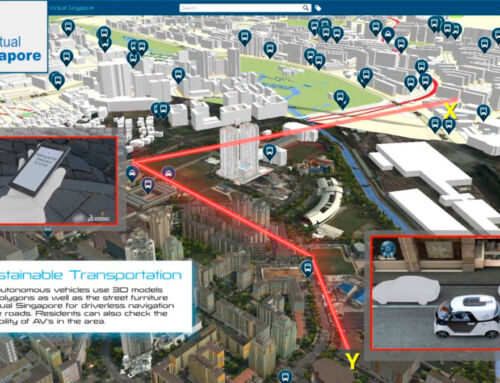“High-quality social connections are essential for our mental and physical health and well-being,” says the World Health Organisation (WHO). Or, put another way, “social isolation and loneliness have a serious impact on physical and mental health, quality of life, and longevity”. In fact, the WHO equates the effects of loneliness and isolation on mortality with those of smoking, obesity and physical inactivity. According to global estimates cited by the same organisation, 25% of older people (i.e. aged 65 and over, or, because of socio-economic and life expectancy differences, 50 and over in Africa) experience social isolation, and between 5% and 15% of adolescents (a group the WHO defines as those living in the second decade of life, or between 10 and 19 years of age) are plagued by loneliness.
This is the scale of a problem that seems to have worsened since the COVID-19 pandemic. However, it is an issue with multiple causes, which are beyond the scope of this brief article. In it, we are concerned only with a new trend in urban planning (and urbanity) that has set out to tackle the issue head on. In any case, and since loneliness is a subjective state, we will refer here (with the WHO and with this trend in urban planning) to the objective situation of loss of social relations that social isolation entails, or, in other words, to unchosen or forced loneliness. This is precisely the source of suffering and illness that many cities around the world are trying to eliminate, if not completely, then at least to reduce as much as possible. Let’s see what these urban planning (and urbanity) initiatives are.
In fact, we distinguish between two types of action against the scourge of unwanted loneliness: initiatives in the field of urban planning and those in the field of urbanity. The former are carried out through design, architecture, construction and the actual urban planning of spaces, in other words, through physical intervention in the urban environment. On the other hand, initiatives in the field of urbanity, which are usually carried out by municipalities and political authorities in each place, set up aid, volunteering and accompaniment programmes, computer applications and electronic support portals, dedicated activities, time banks, as well as tools for diagnosis, detection and assistance to people who suffer from loneliness or are at risk of loneliness. Again, in this space we will deal only with urban planning proposals.
Bloomberg magazine reports on some of the urban development initiatives in an extensive article. We read in its pages that in 2016, the authorities of West Palm Beach, Florida, USA, wondered about the reasons that kept residents and visitors away from its promenade. According to Houssam Elokda, managing director of Happy Cities, one of the companies hired to conduct the research, local residents said the boardwalk “it’s very pristine, but there’s not much to do; there’s greenery, but no shade; there’s novelty, but no function to it”. In response to the study, the West Palm Beach authorities carried out a number of experimental urban planning actions on the promenade:
-They increased the vegetation and installed artwork by a local artist on one section of the promenade.
-They placed large frames with translucent historical photographs.
–Chairs and tables were placed in strategic locations.

By virtue of this simple intervention in public space, the promenade became a place more conducive to social interaction. Indeed, thanks to it, visitors and passers-by found reasons to linger (greenery and shade), something to talk about (artworks and photographs), and spaces to socialise without impositions (chairs and tables).
Another urban planning initiative in cities such as Salem in the USA, Gothenburg in Sweden, Berlin in Germany, and other European cities is the installation of so-called “chat benches” or “friendship benches“. Under this proposal, a series of signs and posters invite passers-by to sit and chat on benches reserved for this purpose, if they wish to do so. In the Netherlands, France and Canada, several supermarket chains have set up so-called “slow checkouts” and chat areas in their shops. This allows customers to talk leisurely with checkout staff or with each other.
Another example of larger-scale urban planning against loneliness is the co-housing communities. These are residential buildings in which neighbours share facilities, such as kitchens, living and dining rooms, in which they engage in communal activities. Residents usually live in these communities on a collaborative basis whereby maintenance and O&M tasks are shared. We have already published an article in this space about the first senior cooperative housing in the city of Barcelona, Spain, an initiative of the association Sostre Cívic (see below).

In any case, urban planners remind us that one of the keys to making people feel comfortable to engage in conversation with a stranger, is that they do not feel pressured to do so. The arrangement of benches in public spaces, for example, is crucial. Benches facing each other will be less effective for this purpose than benches arranged at an angle. At the same time, it is also helpful to offer elements of distraction and/or to feed their curiosity, be it a work of art, a photographic exhibition, etc., as well. An example of this is pets, a classic conversation starter between strangers. In this respect, the dog park is a particularly good place for socialisation and exchange. Finally, there are various proposals for making common areas in residential buildings, such as lobbies, staircases and corridors, a good opportunity for interaction and exchange. Design and architecture, it is said, should consciously take advantage of these places to expand them and turn them into spaces for socialising.
Be that as it may, it is certain that more initiatives will emerge to encourage citizens to break out of the forced solitude to which modern life often condemns them. Amusement Logic, as a player in design, architecture and construction and thus in this field of research and development, will pay constant attention to them and share them with all of you. After all, any such initiative can be the beginning of a beautiful friendship.
You can enjoy the article on Sostre Cívic’s co-housing example here: First senior co-housing collective ownership and use
Sources: WHO, Bloomberg, La Vanguardia. Images: Wikipedia, CP Campiello, CP Valdemera, Pixabay.






